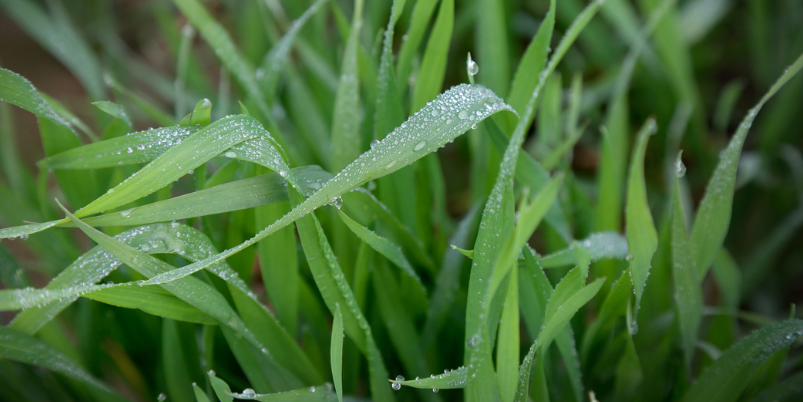High pH can cause pesticide breakdown
High pH can cause alkaline hydrolysis – pesticide breakdown. The more alkaline the water, the faster the breakdown.
Water is a crucial vehicle to apply agrochemicals, biologicals, biostimulants and nutrition to crops. Although it’s a cheap carrier, its pH and hardness can have a significant impact on the performance of some products you will be applying.
These products come at significant cost. You could lose 50% of a product’s performance, so it is vital to understand the products at risk.
You can then take any necessary steps to test your water and correct quality ahead of filling your sprayer to maximise pesticide performance.
Potential impact of high pH:
- Pesticide breakdown may be rapid for some active ingredients, or slow / non-existent for others
- Active ingredient breakdown will reduce absorption into the plant and ultimately reduce effectiveness
- Repeat treatment may be required
What is pH?
pH is a measure of acidity or alkalinity and determined by the presence of hydrogen (H+) ions and hydroxyl (OH–) ions.
pH stands for “potential for Hydrogen” and is a measure of hydrogen ion concentration in water. When the concentration of hydrogen (H+) ions and hydroxide ions (OH–) are the same, the solution is neutral.
pH is a measure of acids and bases in solution and measured on a 1 to 14 scale. A neutral pH is 7. Water below 7 is acidic, above 7 is alkaline.
The pH scale is logarithmic, so pH5 is 10x more acidic than pH6.


How high pH can cause pesticide breakdown
High pH (alkaline) water can breakdown some agrochemicals through a process called alkaline hydrolysis. Once inactive, the pesticide cannot perform its function.
The more alkaline the water, the more rapidly the pesticide breaks down. Hydrolysis can be very fast when pH of the water is greater than 8 and 9. For every unit increase in pH, the rate of hydrolysis increases 10 times.
Some pesticides begin to break down as soon as they are mixed in water with a high pH. The longer a mixed chemical is left in the tank prior to spraying, the greater the breakdown.
It is therefore crucial to know if any of the agrochemicals you are using are susceptible, the pH of the water you use for spraying, and how to take corrective action where necessary.
Do you know which pesticides are at risk of breaking down?
Many of the pesticides you will be applying to your crops are at risk of alkaline hydrolysis. These include:
- Carbamates and pyrethroids
- Some PGRs and fungicides
- Some herbicides, including glyphosate
Glyphosate for example, is most stable at pH5 and therefore most water will require treatment with a suitable water conditioner to buffer or acidify the water before glyphosate is added to the spray tank. You can check pH for pesticides here.


Check the pH of the water you use for spraying
The easiest method to check the pH of your spray water is with pH test paper or a pH meter.
It is worth being aware that some agrochemicals are alkaline and will raise the pH of the spray water.
If the pH of your spray water is too high, you should lower it
If the pH of your water is too high, you can lower it using:
- A chemical water conditioner to acidify/buffer pH (and will also isolate hard water cations if present)
- An adjuvant with pH buffering properties
As alkaline water can reduce performance so significantly, adding a water conditioner or buffering adjuvant as standard is a good idea. This way you can be certain your spray mixture is stable and uptake into plants / insects can be maximised.


For optimal performance, adjust pH to suit the pesticide you are using
Water conditioner for use with glyphosate only
e.g. Volta-Ego – Will take the pH of the water to around pH5 – the pH at which glyphosate is most stable.
Water conditioner for use with all agrochemicals
e.g. Assist – Will take the pH of the water to around pH6-6.5. This will create the most stable environment for a spray mixture containing multiple products.
An adjuvant with pH buffering properties
e.g. Kantor – Will buffer the water to around pH6-7. This will create the most stable environment for a spray mixture containing multiple products. Ideal option where other adjuvant benefits required.
Learn more about Water Conditioners & Adjuvants


Is hard water and high pH causing havoc with your tank mixes? If it is, you’ll need to condition hard water and correct pH with a water conditioner to maximise pesticide effectiveness.
Learn more

They’re not all muck and mystery! Master tank mix adjuvants and you’ll be able to select the right ones so you can push your pesticide performance to the max.
Learn more







